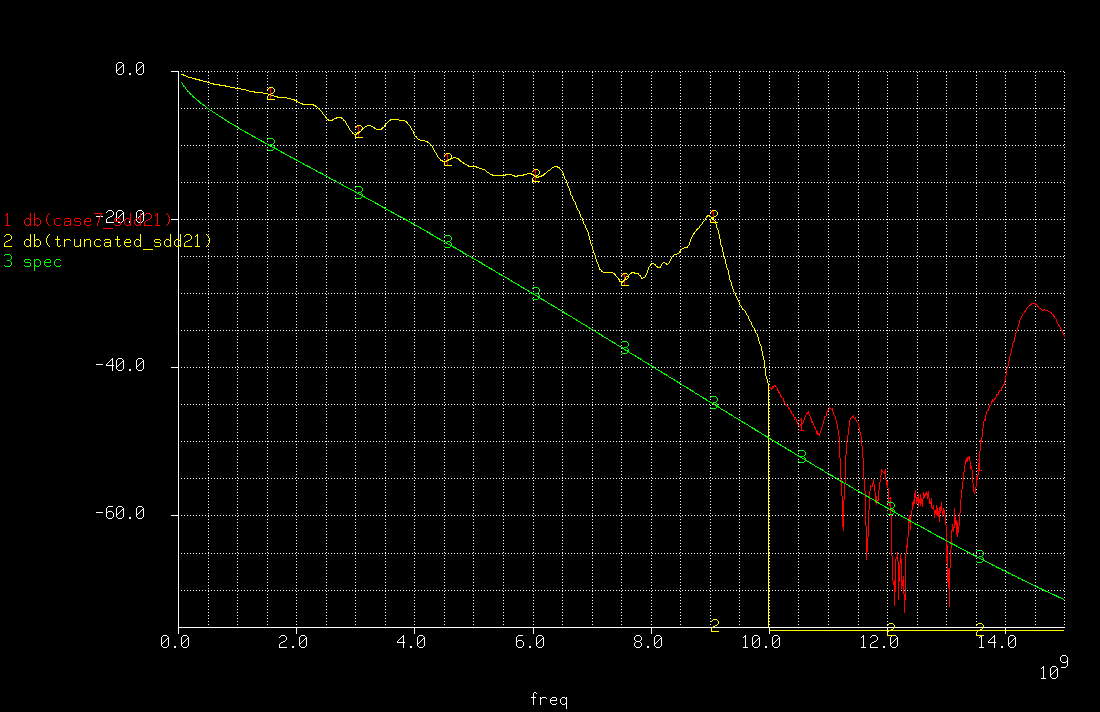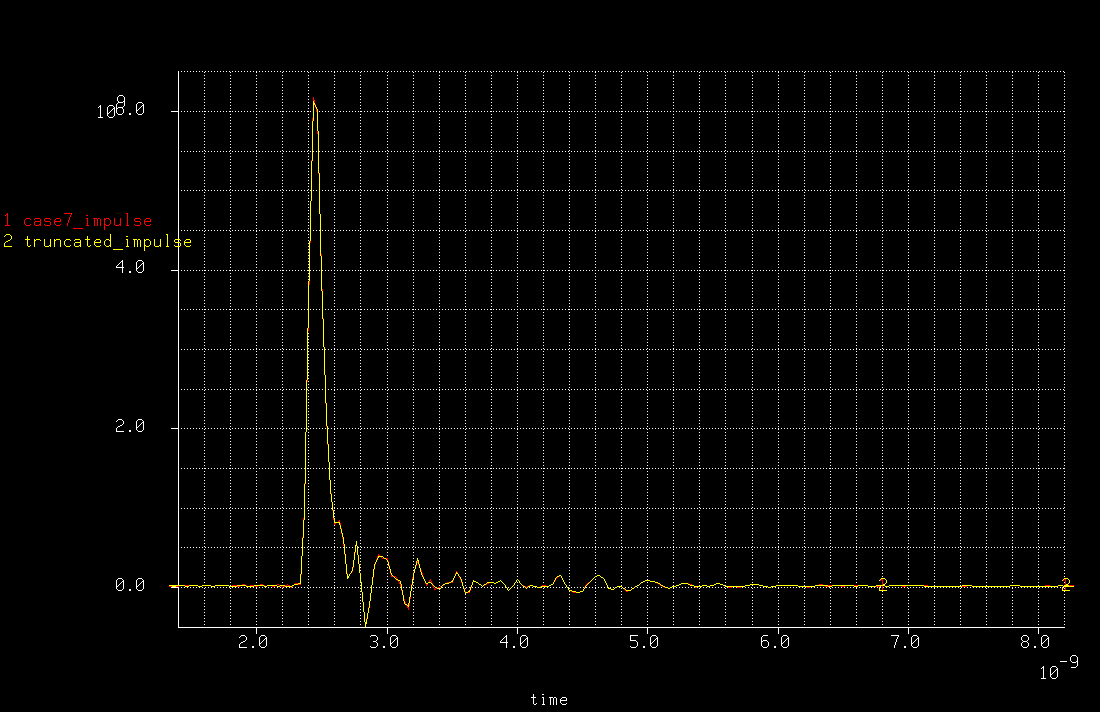Re: [BP] Question regarding Channels
john,
Good points.
I would amplify by saying that the areas where test case #7 fails
the informative model are really insignificant. I am taking advantage
of TYCO's release of the channel data to show what happens to the
impulse response, which is much more sensitive changes at high
frequncies than data, when you zero out SDD21 above 10GHz. The
answer is nothing unless you have a good magnifying glass.
Which means that if we reject case #7 because it fails the
informative model it will be for the wrong reason. I think that we
should most likely reject case #7 because it is really hard to get
data through but that is because of perturbations in the impulse
response which manifest themselves as in spec SDD21 ripple.
We need a way of rejecting channels with late impulse response
perturbations, which are very hard to equalize out, while not
excessively restrict easier to equalize impulse response widening.
From the way i talk, i am sure you can tell i am talking about
time domain specification.
charles
> Brad,
>
> I cringe at that terminology. I was trying to ascertain from the group which channels they thought were the problem - loss induced channels, channels with deep nulls, or channel with ripple. In the Signaling Ad Hoc it was discussed and requested that we look at channels with more loss than the channel model to ascertain margin, look at channels with deep nulls, and look at channels with ripple. It is not just a matter of distance, but a combination of all of these effects. The channel with the null that I provided is not even as bad as it can be, since the backplanes used implement the QuadRoute technique, and hence the backplane is only 0.125" thick, which helps to reduce the null effect. Furthermore, it is only a 22" system length, and is actually above the proposed model by approximately 5dB or more out to 6 GHz.
>
>
>
> Loss in the right places can actually be beneficial. It helps to reduce crosstalk and return loss. There is an informative model limit, however, the signaling ad hoc said they wanted to look beyond it. IBM and LSI showed they could still do it, but the penalty looked to me potentially more taps, i.e. more power. Case #1 in general is above the model with two minor excursions due to ripple. The skin effect losses with 6 mil on daughtercards and 4.75mil for 20" on backplane forces a slope that makes the ripple go below the model. Joel's system is based on all 6 mil wide traces on daughtercard and backplane, and this will impact the slope of the loss curve in a positive manner. .
>
>
>
> The last channel (test case #7) has ripple in it that is due to some stub and adjacent slot spacing. You will see it doesn't exceed the proposed model until 12 GHz @ -55 dB. I have a hard time believing that the exceeding of the model was the problem, but rather the overall ripple in the channel, which Mary Mandich pointed out could be a problem for some equalization techniques, which I have also seen.
>
>
>
> So I am trying to find out from the people who didn't want these channels included which ones they were specifically opposed to. As people have said, it will help us to understand where things will break.
>
>
>
> John
>
>
--
|--------------------------------------------------------------------|
| Charles Moore
| Agilent Technologies
| ASIC Products Division
| charles_moore@agilent.com
| (970) 288-4561
|--------------------------------------------------------------------|


